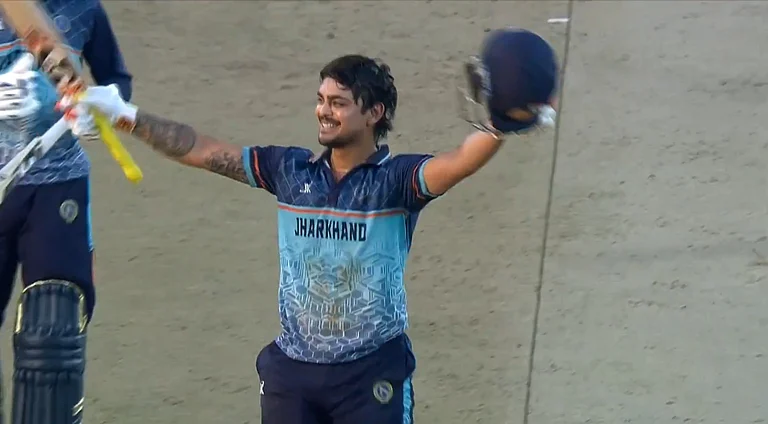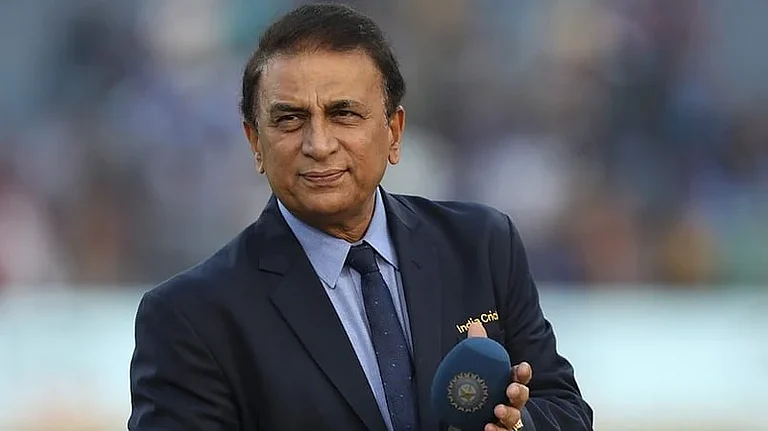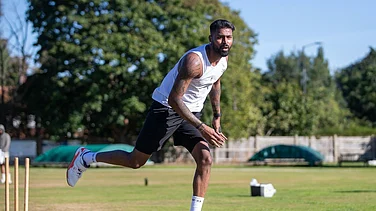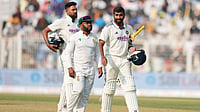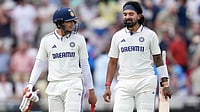The Indian domestic cricket scenario has changed drastically over the years, with the big money and professionalism of the present day. But even today, going by former India batter Manoj Tiwary’s recent comments, there is still a question mark on the umpiring standards. (More Cricket News)
Read Part 1 HERE
And the same professionalism and big money, especially in franchise cricket, has led to attitudes where it has become fashionable for star players to avoid the relatively lower-paying Ranji Trophy games, with cricketers saving themselves for the vastly more lucrative white-ball franchise cricket of the Indian Premier League (IPL).
Ironically, what would seem to be extremely good remuneration in terms of match fees for Ranji Trophy cricket to most Indians, now feels like peanuts for the fortunate few with franchise cricket contracts that run into crores of rupees.
According to Tiwary, the value and charm of Ranji Trophy has diminished primarily because the IPL player auction happens before the commencement of the Ranji season. He says that once a player gets an IPL contract, he doesn’t have the motivation or appetite to play Ranji Trophy anymore. There is also the fear that if an injury occurs during a Ranji Trophy game, it could jeopardise the IPL contract and affect the money on offer.
ALSO READ: NCA Says Shreyas Iyer Fit, After He Skips Ranji Trophy QF - Report
Consequently, many top players no longer have the desire to play the long-format red-ball games, he says, when they have the option of earning big bucks batting and bowling for a few overs in franchise cricket, where the demands on cricketing technique, ability and physical and mental preparedness are completely different.
The Ranji Trophy is a tournament which has, for 90 years now, traditionally produced top quality cricketers ready for Test cricket, because the formats are so similar. Tiwary says that the IPL can teach a player about ‘intent’ but carelessness also creeps in simultaneously, with players trying to score off every ball, knowing they would be around for just a few overs when compared to a red-ball game.
At the end of the day, the IPL is only a 20-over ballgame where a batter usually would not get an opportunity to play for more than 10-12 overs unless he carries his bat, and a bowler would never bowl more than four overs.
So the tendency for batters is to try to score off every ball without learning the art of building a long innings. And for the bowlers, the aim is to just bowl out their four-over quota and restrict runs to the extent possible.
All this can easily lead to careless cricketing habits, as we often see now.
On the other hand, in the four–day Ranji Trophy games you need to grind out long hours for your runs and wickets. And so, apart from the mental discipline needed, even the physical demands on the fitness of players are different.
The patience to stay for long periods at the crease and the concentration needed to do so have always come from playing red-ball matches and this has ultimately helped players to perform on the biggest stage. Over the past few years of near non-stop white-ball cricket, these skills have eroded alarmingly, especially among the younger players.
Which is why the roaring success of the current set of young players like Yashasvi Jaiswal, Sarfaraz Khan and Dhruv Jurel in the ongoing series for India has been so heartening.
They have all displayed immense maturity in the way they have gone about their batting, putting their heads down and playing out difficult periods, and attacking with flair when they were ready. And they have scored quickly by playing conventional cricketing shots, and been an absolute joy to watch.

And it is domestic red-ball cricket that has undoubtedly shaped their persona as players, in more ways than one. The Ranji Trophy has always been the backbone of our domestic cricket, the breeding ground for future India stars and the platform to work out technical glitches when out of sorts. The IPL must be played and promoted for sure, but not at the cost of the Ranji Trophy, if this is to continue.
But when the money on offer is so much greater in the shorter format, it is natural that many players would prefer to play franchise cricket. And we see that happening now when the limit of a young players’ ambition (and probably more so of his parents) is to win an IPL contract and play T20 franchise cricket. After all, a cricketer’s playing career is short and the money earned during those years would serve to secure his or her financial future.
It is therefore quite understandable that a young player earning INR 5 crore for two months of cricket in the IPL would want to concentrate on it fully and earn that money year on year, instead of toiling for months on end in red-ball cricket, for a much smaller remuneration.
But to put this in perspective, those playing for India on BCCI central contracts earn INR 3 -7 crore per year, for just being part of the team. Their match fees, endorsements etc are over and above this, which could easily amount to a matching figure, or more.
Numbers that are unthinkable for most Indians, even in their wildest dreams.
But because the IPL offers multi-crore deals to its top players for just two months of cricket, money elsewhere now appears meagre and our cricketers go chasing after that lucrative contract that would secure their futures and change their lives beyond all expectations.
And with the money, comes the impatience and arrogance of success.
The Ishan Kishan controversy erupted when reports surfaced about India men’s cricket team coach Rahul Dravid asking him to participate in the Ranji Trophy and perform there to cement his spot in the national team. Despite this, in his own wisdom, Kishan opted to stay away from the ongoing Ranji Trophy matches and train for the IPL instead.

The issue however, is certainly not limited to Kishan alone, as players like Shreyas Iyer, Krunal Pandya and Deepak Chahar too have made sporadic appearances in domestic cricket of late.
And almost exactly two years ago in January 2022, the then BCCI President Sourav Ganguly had similarly suggested to a partially fit Hardik Pandya who was not bowling at the time, that he should play a few Ranji Trophy games, try out his bowling there and feel confident enough to make a comeback to the Indian side when fully fit and ready.
A suggestion that was however, not acted upon by Hardik, who led his IPL side Gujarat Titans to a title win instead, and soon found himself elevated to the captaincy of the Indian white-ball side.
Perhaps deservedly so, but in clear violation of the BCCI president’s wishes.
A lot of selections to the national team have happened directly from the IPL in recent times and today’s top players know that a few explosive performances there would be enough to earn them a spot in Indian white-ball teams and as such, suggestions to play Ranji Trophy can be ignored, even when coming from the BCCI president himself.
This has further diminished the value of domestic cricket in the eyes of these young cricketers.
Maybe young Ishan Kishan thought on the same lines and going by past precedent, if he does well enough in the upcoming IPL 2024, he might just find himself back in the India team for the T20 World Cup in June.
Or maybe he doesn’t care enough about playing for India anymore, unless it is on his own terms, with the big bucks of the IPL overriding every other concern.
It is heartening however, to see that the BCCI is taking a tough stand this time, and there is a strong feeling that both Ishan Kishan and Shreyas Iyer -- who also chose to ignore the BCCI directive -- may end up losing their BCCI central contracts.
For the sake of these two talented cricketers, one hopes that will not be the case. However, only time will tell how this will play out.
(That concludes part 2 of this series. The next instalment looks at possible solutions for the BCCI to revitalize the domestic cricket structure and leverage the vast talent pool at its disposal)
The views and opinions expressed are those of the author. The author is a veteran Wing Commander of the Indian Air Force, who has played Ranji Trophy for Services.








